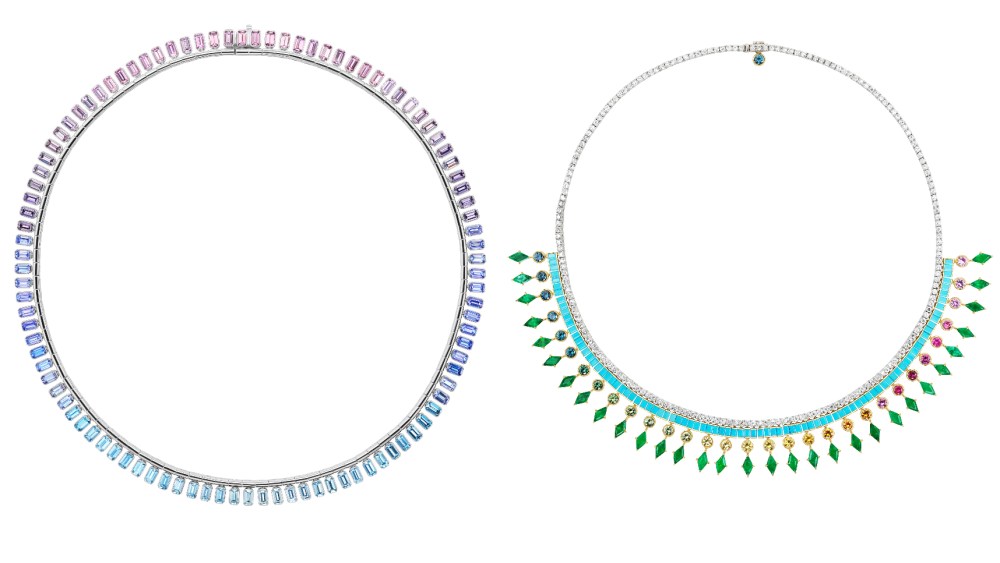LONDON — Lab-grown diamonds have become a norm in the jewelry industry over the past few years, as parts of the industry shift away from mining practices and toward more sustainable initiatives.
Now, that same ethos is being applied to the gold mining industry.
Single Mine Origin, otherwise known as SMO, is on a mission to trace gold back to its provenance for consumers and brands to take full responsibility of where their metals are coming from rather than relying on recycled gold, the origin of which cannot be traced.
According to SMO, only 4 percent of the world’s gold supply is traceable from mine to the final polished product.

Brothers Dan and Charlie Betts, who work at their family company, the Betts Group, a ninth generation refiner and manufacturer to the jewelry industry in the U.K., started the initiative in 2018.
As a family business, the Betts Group has been recycling gold for more than 260 years, but the Betts brothers are now aiming to refine gold practices after dealing with blockages in the industry.
“We’ve been looking at responsible sourcing and provenance for a long time [at the Betts Group] and we work with fair trade and we do a lot of work in recycling, but I was pretty frustrated at how difficult it was to move a lot of barriers in terms of inconsistent supplies, high price premiums and resistance from jewelers,” Charlie Betts said in an interview.
Dan Betts, who also runs a gold mining and exploration business called Hummingbird Resources was getting frustrated with the bad reputation gold mines were getting, he said.
The two brothers joined forces to set up SMO, focusing on three core pillars: traceability, responsibility and transparency when it comes to mining gold.
Dan Betts’ first gold mine came into production at the end of 2017 in Mali. “Dan’s mine has employed loads of people locally with educational, environmental and health care impacts, as well as infrastructure [for the locals]. We’re quite unique in that we have oversight of the whole supply chain from the gold mine, all the way through refining, manufacturing to finished product,” said Charlie Betts.
SMO uses the London Bullion Market Association, otherwise known as LBMA in Switzerland to refine its gold. “We send in an auditor every single time the gold gets refined in Switzerland, so we know we have that traceability,” explained Charlie Betts.
SMO has produced a QR code for each piece of gold that’s sold, allowing customers to learn about the mine, as well as the social and environmental impacts around that mine, such as disuse of mercury and child labor.
Charlie Betts said he takes issue with businesses that rave about recycled gold.
“What they’re really doing is taking a piece of pre pre-existing supply of gold — that was already the status quo within the industry. Using recycled gold has no impact on how much gold is mined because gold is like currency — gold miners are going to mine as much as they can because it’s currency,” he said.

SMO is expanding its effort into the U.S. and Canada with fine jewelry manufacturer C&J Fine Jewelry Makers.
“We believe, amidst the cacophony of competing standards, consumers are trying to do the right thing; to the extent their knowledge base and wallet allow,” said Anthony Maietta, director of C&J Fine Jewelry Makers.
“The consumer is trying to navigate a complicated landscape and it’s a breath of fresh air to join the conversation with an active voice and with something to actually feel good about,” he added.
Jeweler Emily P. Wheeler will present her first all-SMO collection at the Las Vegas Couture show. She has been an early adopter of SMO in the U.S., along with Roseate Jewelry.
“SMO gold is an attractive option to us because we now know exactly where our gold comes from,” the designer said.
Her brand’s gold comes from the Ity mine in Côte d’Ivoire. Although the gold costs more (by up to 2 percent), it’s easier to implement for her brand from a logistical standpoint, she said.
One-hundred percent traceable gold is catching on within the luxury market. Messika, Garrard, Bulgari and Stephen Webster have already committed to the practice.



